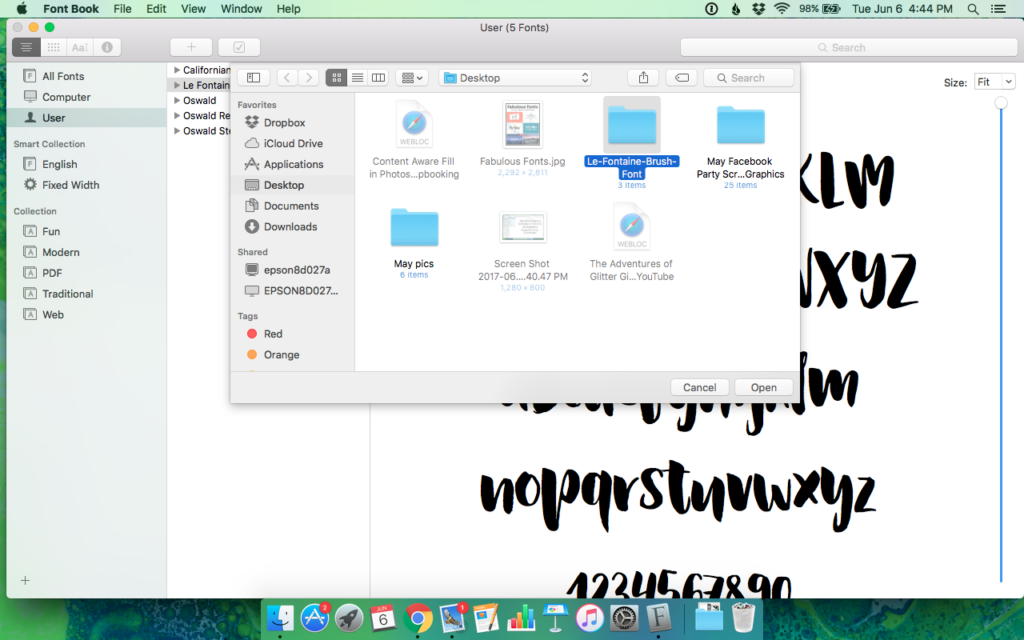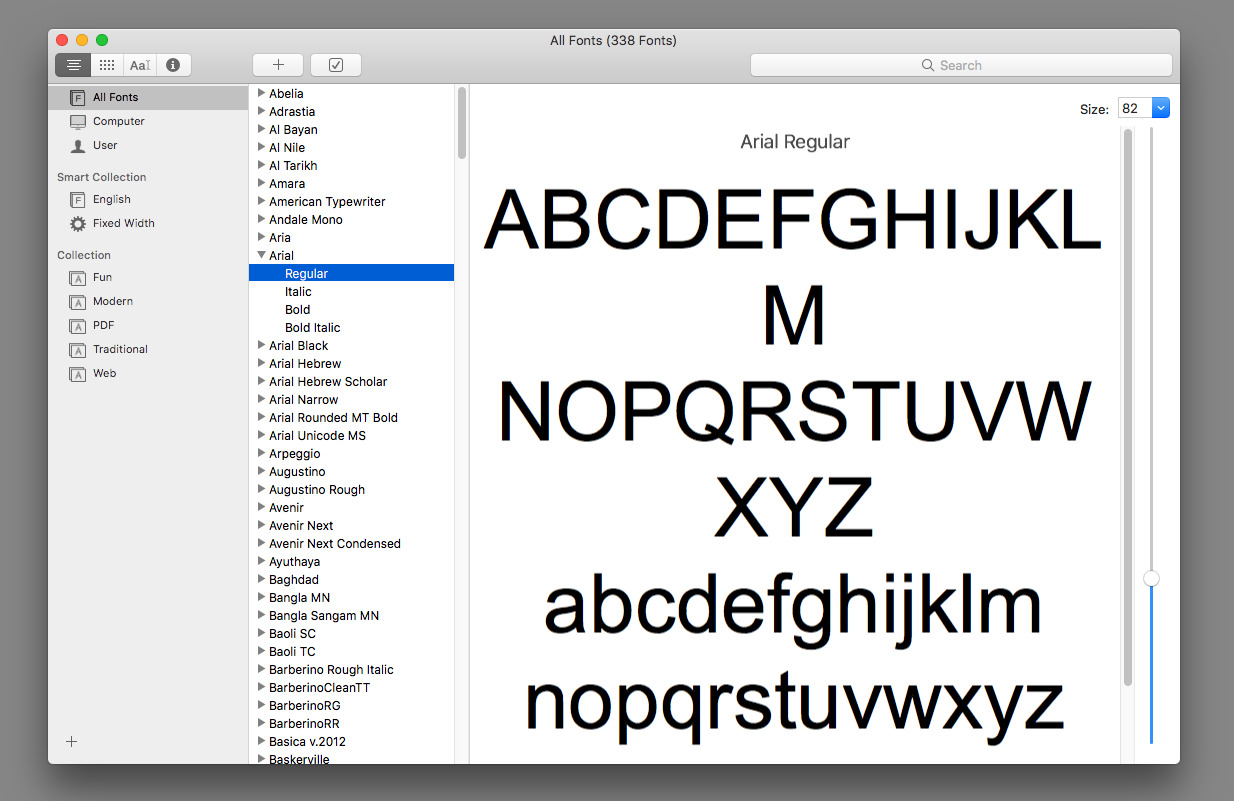

The OpenType font format is an extension of the TrueType format and was created to add advanced typography features. It is most useful for languages with large character sets like Chinese or Japanese that may use the same glyphs for different fonts. The TrueType collection (.ttc) is a space saving modification of the TrueType format containing multiple TrueType/OpenType fonts that share glyphs. It can also contain information specific to each platform it supports (encoding tables, names in different languages, etc.). All the information (outlines, kerning, widths, etc.) related to a TrueType font is contained in one file. Each table contains a specific type of information for a font. TrueType fonts are made up of separate structures of information called tables. The TrueType font format has been supported internally on both Mac and Windows operating systems for some time now. The benefit of representing shapes this way is that they can be scaled to virtually any size and still retain smooth edges (unlike bitmap fonts which exhibit jagged edges and other artifacts when enlarged or shrunken). They contain instructions for building outlines from scalable lines and curves which are filled to create the solid shapes of letters and other glyphs. PostScript Type 1, TrueType and OpenType fonts are vector outline fonts. Of course, for Free ("as in Freedom") fonts, you don't need to worry (and one of the most prominent licenses of such fonts is the OFL).Mac and Windows PC Fonts Mac and Windows PC Fonts That's great, but be careful to see if the license of the fonts that you are splitting/converting allows such wide redistribution. Addendaįurther comments: One reason why some people may be interested in performing the splitting mentioned above (or using a font converter after all) is to convert the fonts to web formats (like WOFF).

If you want to have a more programmatic/automatic way of manipulating fonts, then you might be interested in my answer to a similar (but not exactly the same) question. Note that I emphasized generating instead of saving above: saving the font will create a file in Fontforge's specific SFD format, which is probably useless to you, unless you want to develop fonts with Fontforge. Repeat the steps of loading 4-6 for the other font and you will have your TTFs readily usable for you. After the font is loaded (it may take a while, as this font is very large), you can ask Fontforge to generate the TTF file via the menu File > Generate Fonts.Fontforge will tell you that there are two fonts "packed" in this particular TTC file (at least as of ) and ask you to choose one.

Open it with Fontforge (e.g., File > Open).Assuming that Windows doesn't really know how to deal with TTC files (which I honestly find strange), you can "split" the combined fonts in an easy way if you use fontforge.


 0 kommentar(er)
0 kommentar(er)
